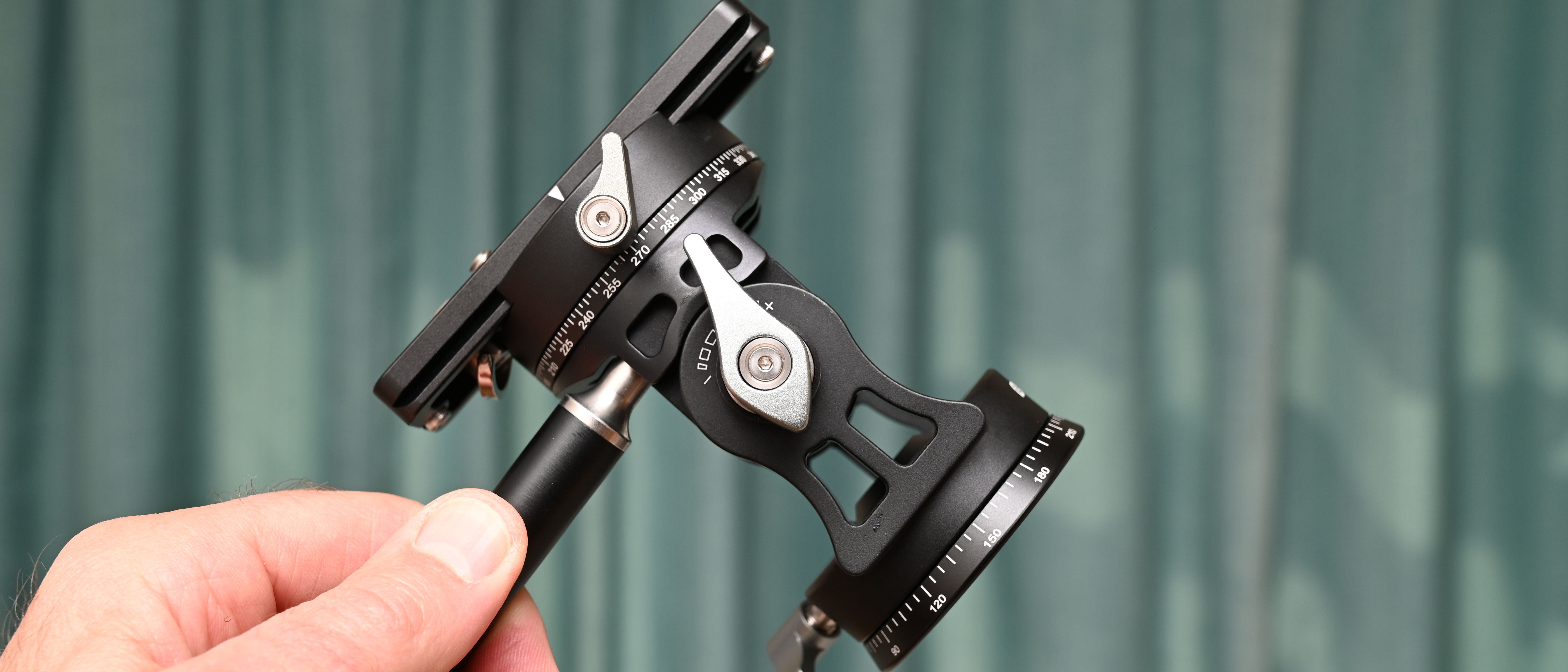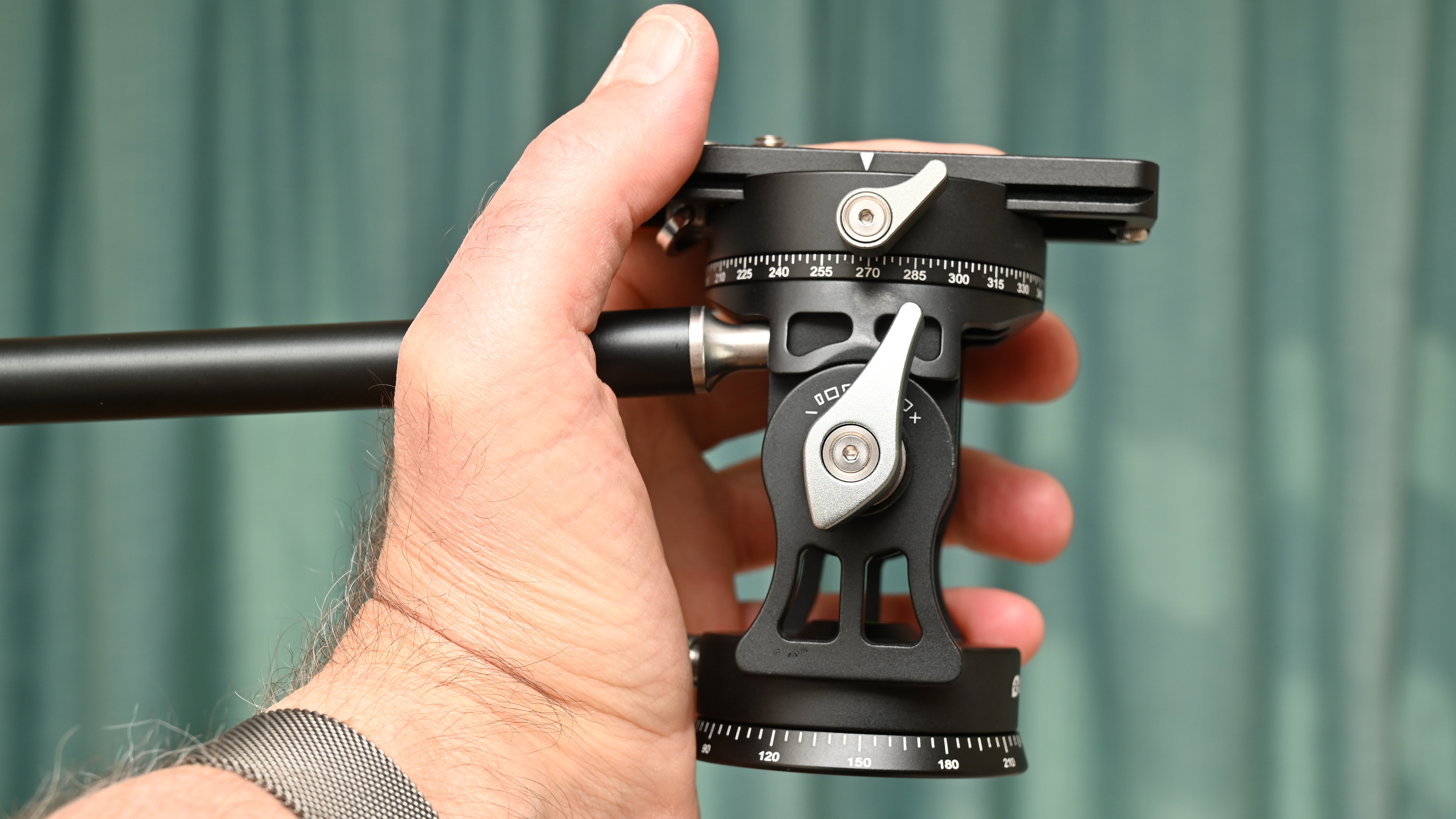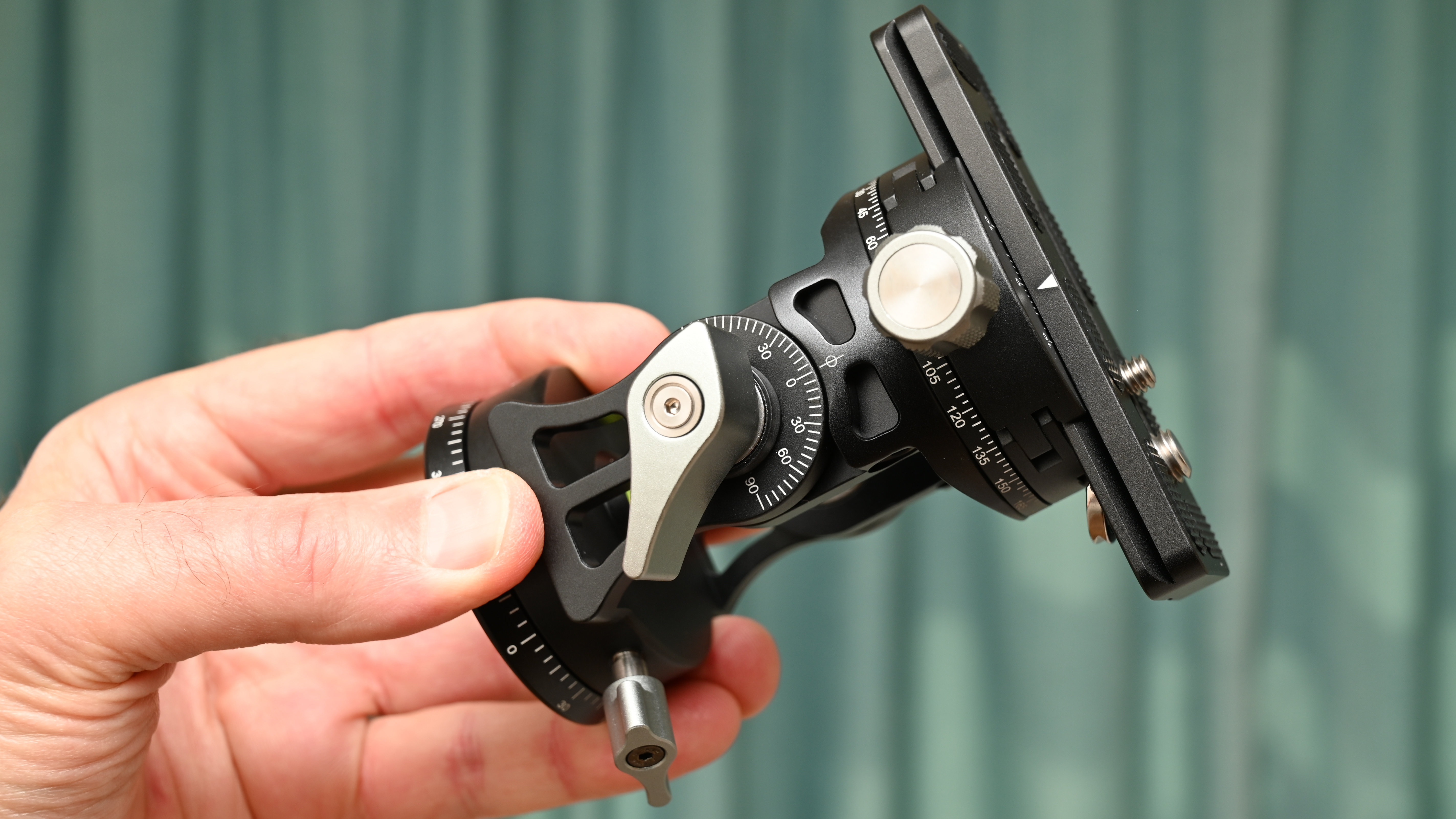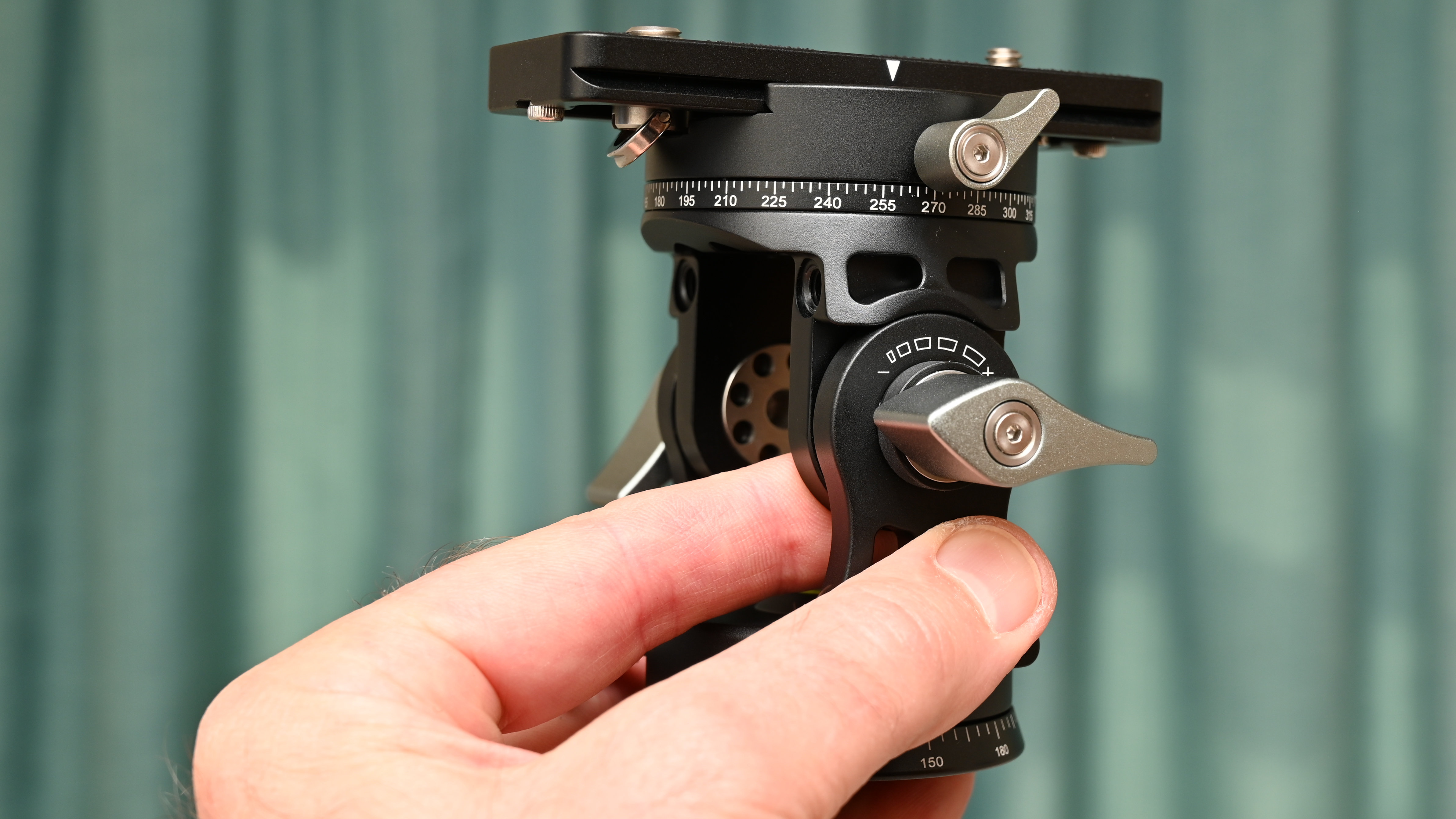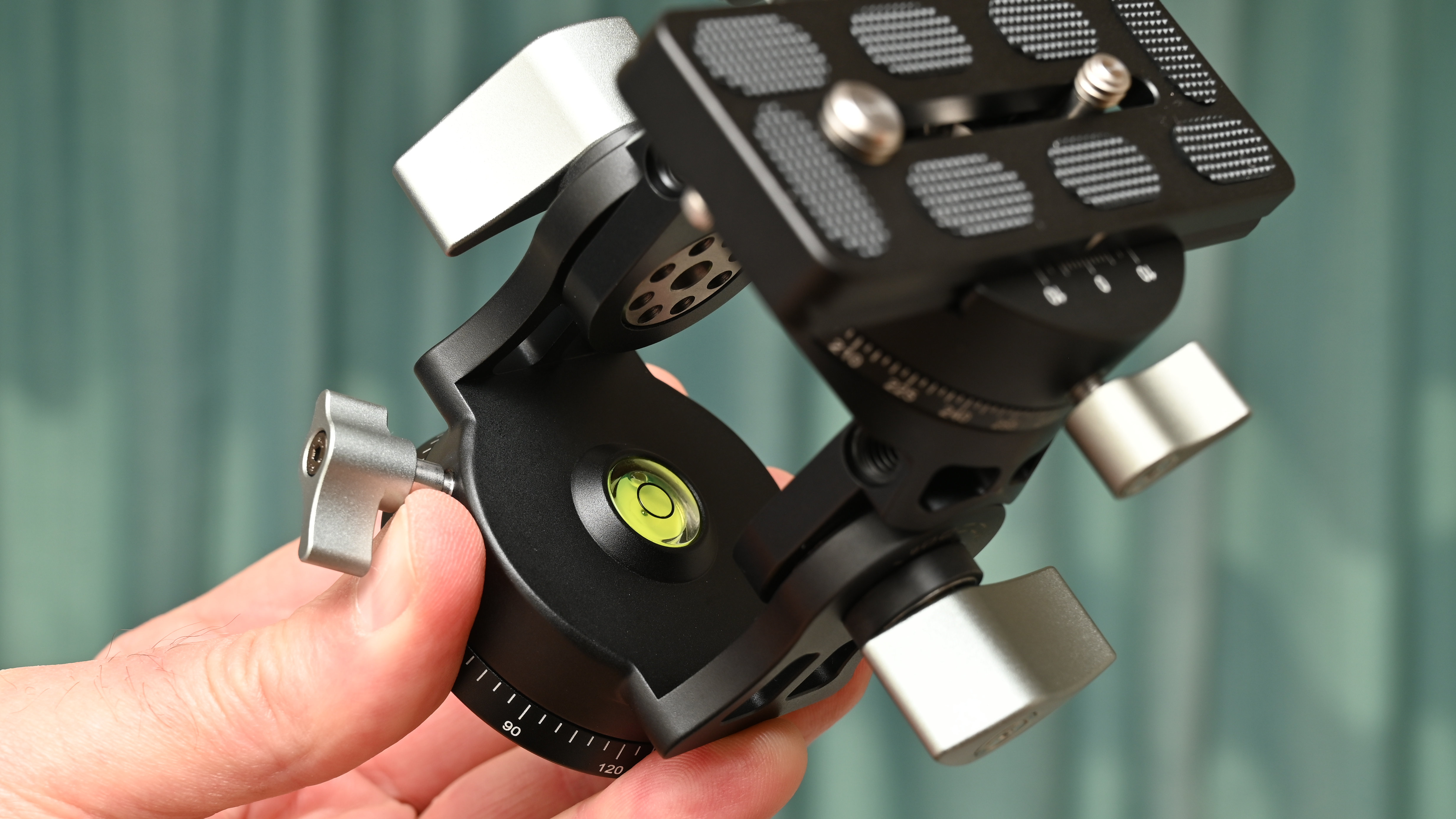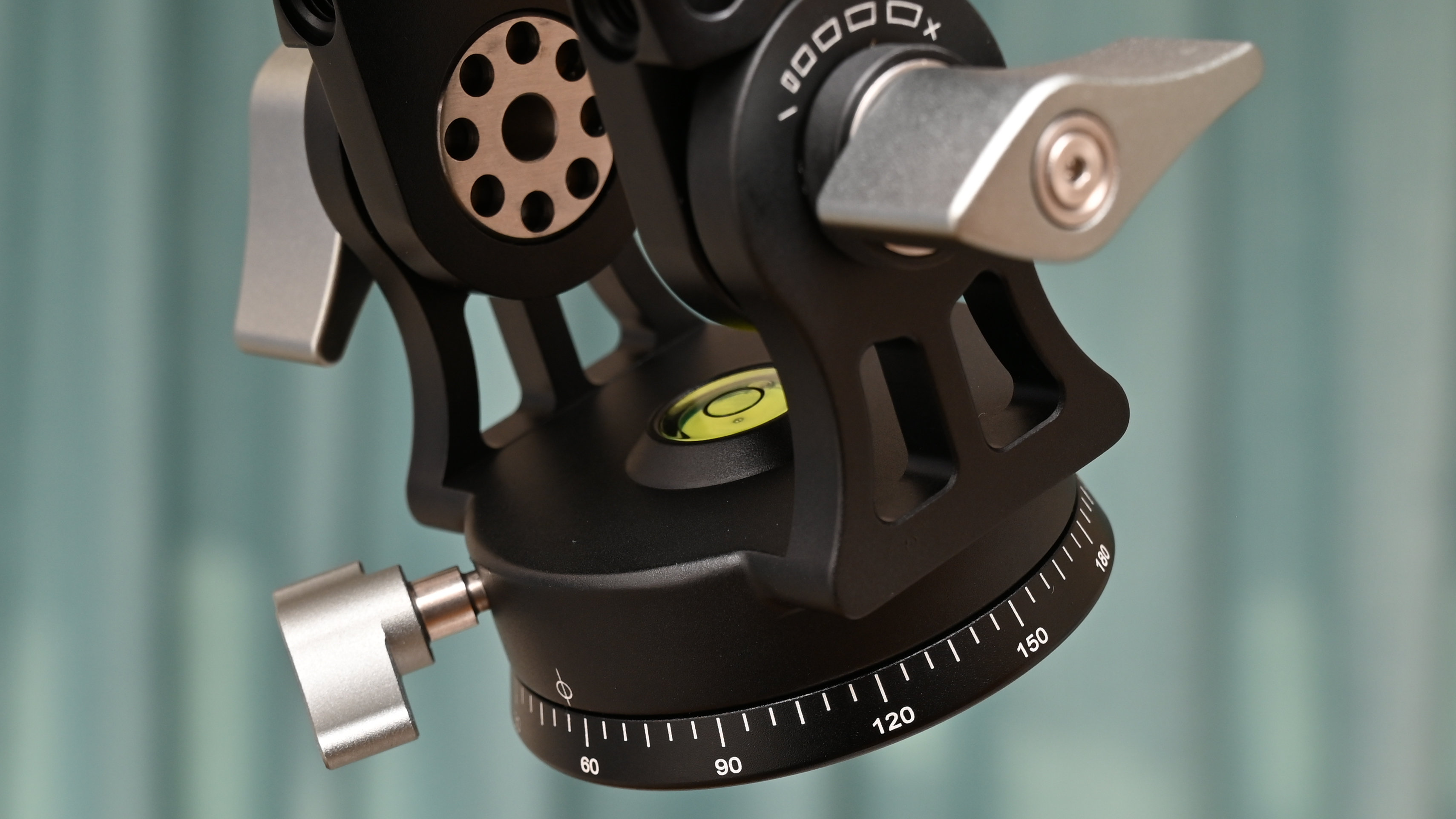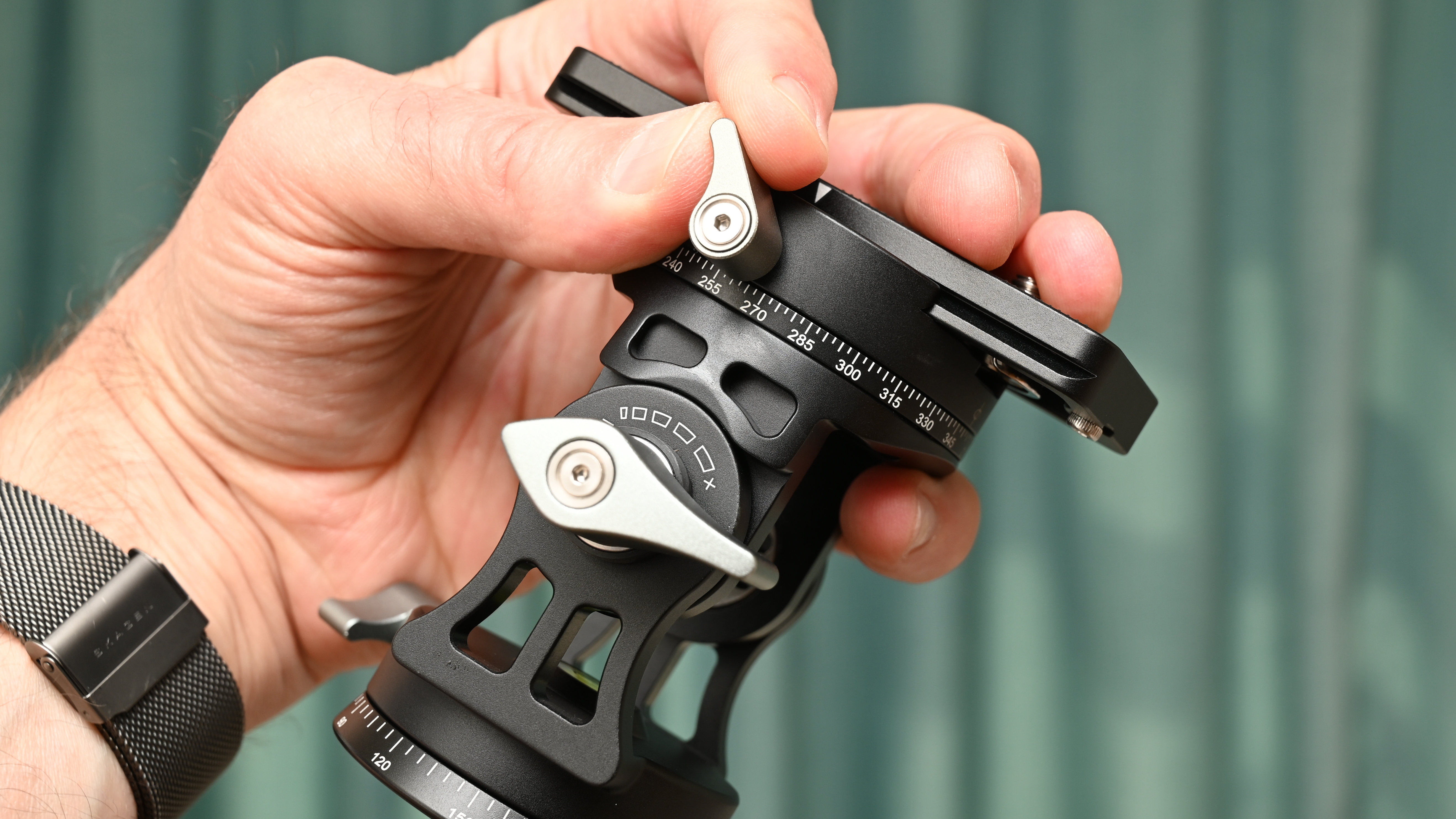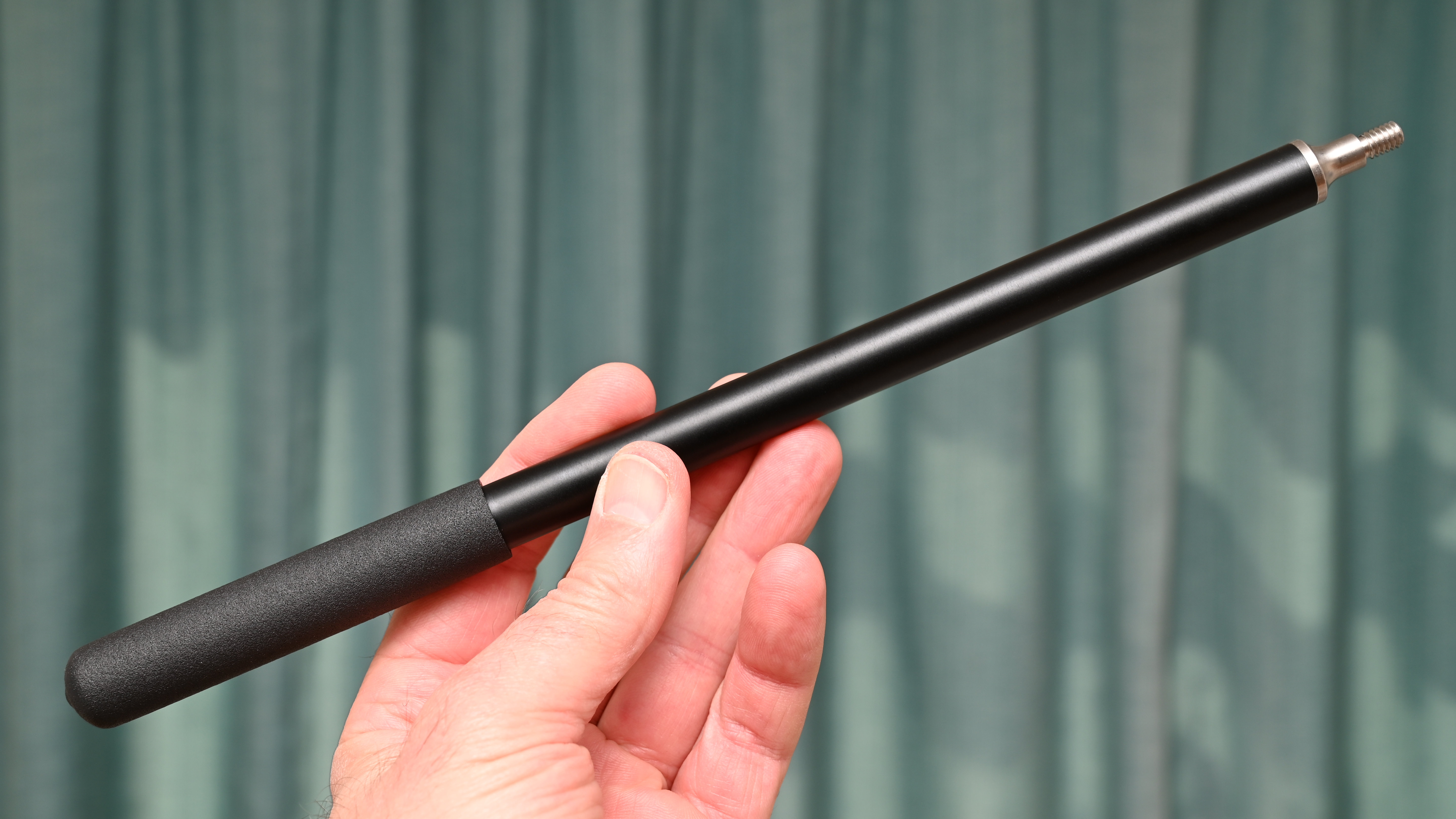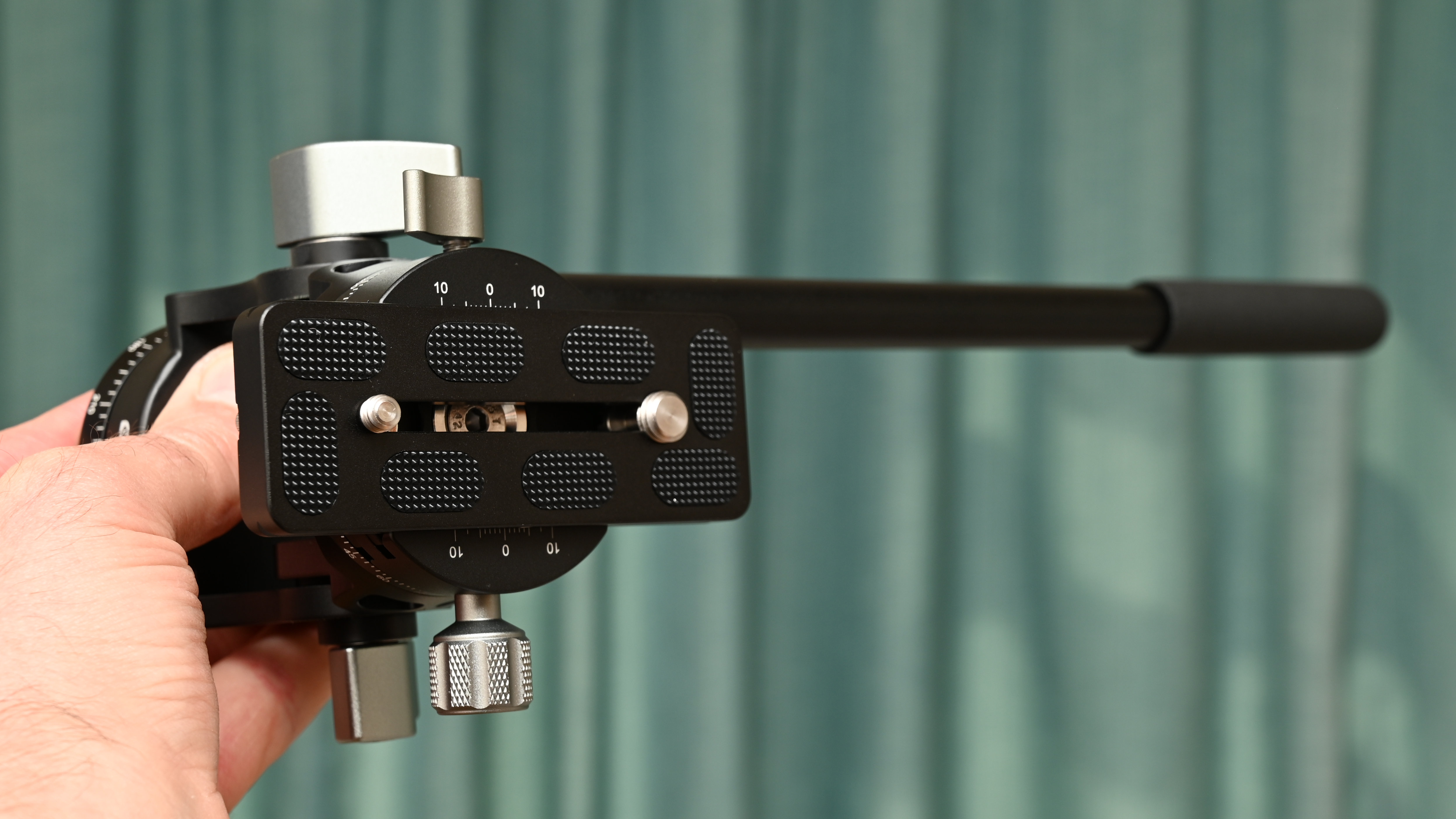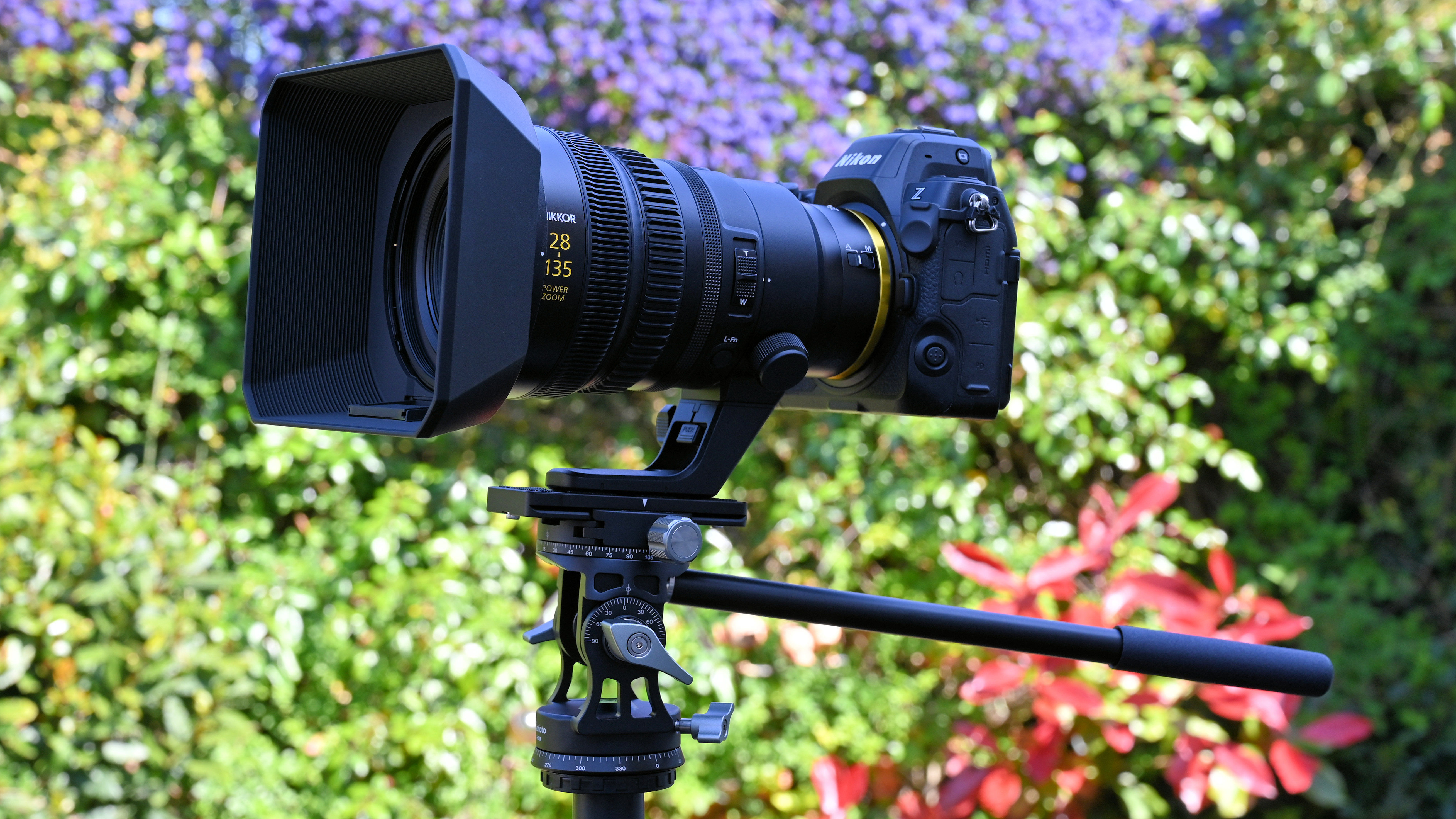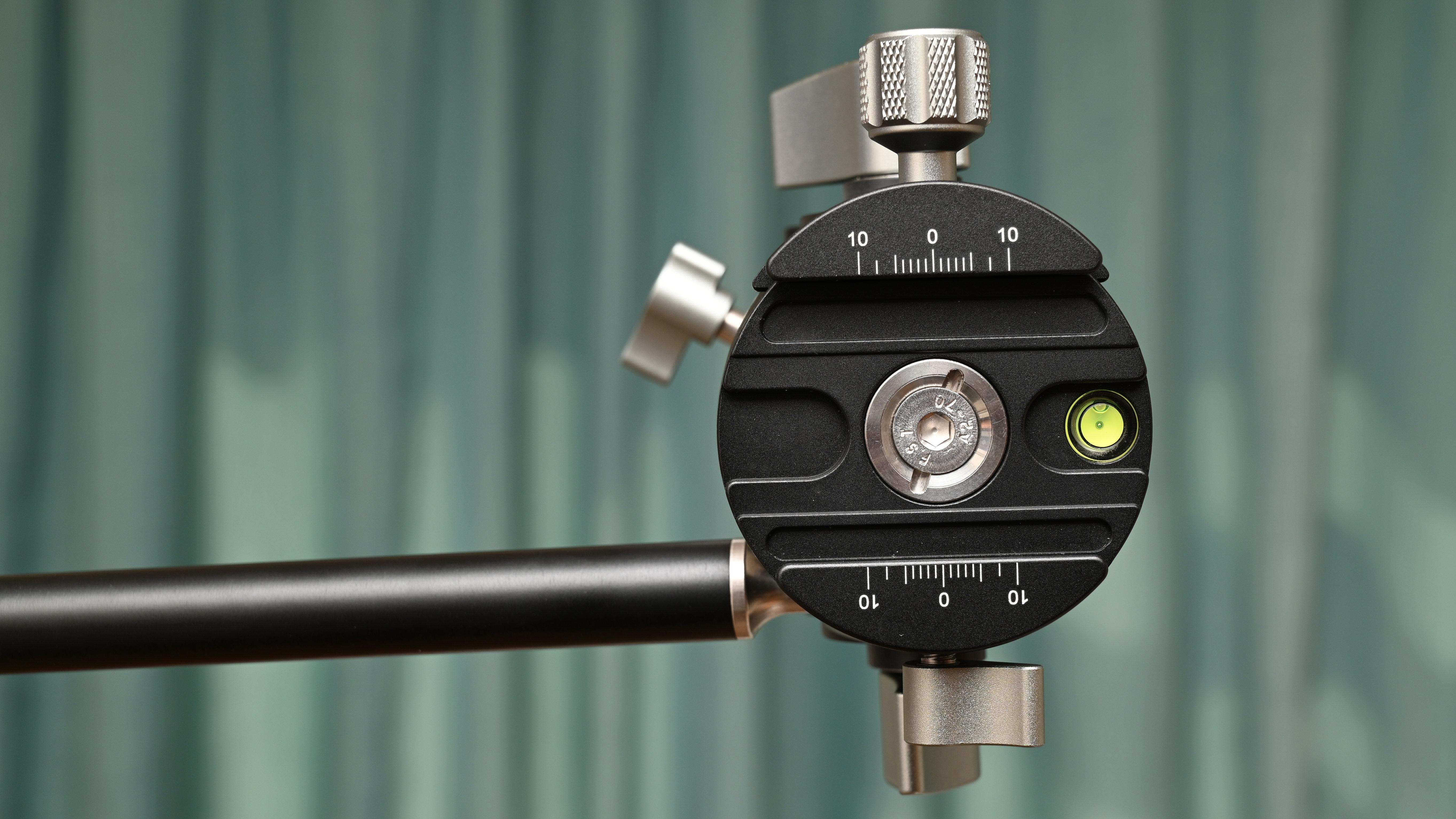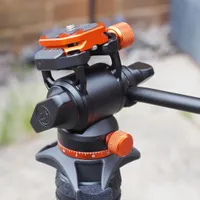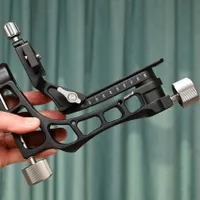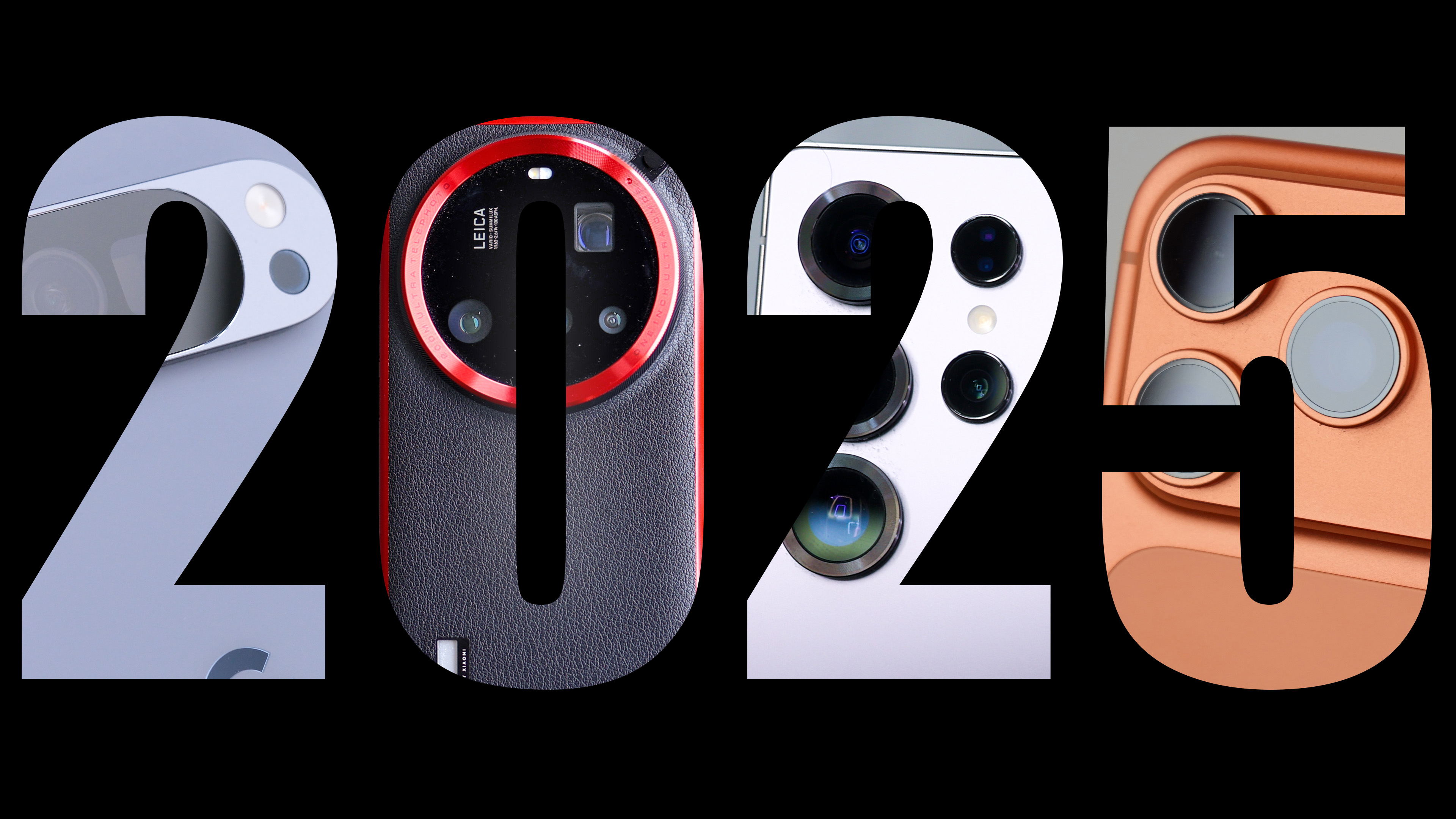Digital Camera World Verdict
The Leofoto VH-30R Two-Way Head is advertised as a monopod head and sure enough, it works just fine on a monopod. I actually prefer using it on a tripod, taking advantage of its full, free and fluid movement for tilt and panning. Indeed, the dual-axis panning facility makes it ideal for shooting video as well as stills.
Pros
- +
Fluid pan and tilt
- +
Dual-axis panning
- +
Includes handle
Cons
- -
No side-to-side tilt
- -
No portrait orientation shooting
- -
Handle only works with lower pan
Why you can trust Digital Camera World
When it’s time for lights, camera, action, the Leofoto VH-30R Two-Way Head is ideal for the ‘action’ part of the proceedings. It’s a 2-way pan and tilt head that enables you to track erratically moving subjects with ease, from birds in flight to aircraft at an airshow, to all manner of sports and wildlife scenarios. It’s very versatile as well, suiting anything and everything from spotting scopes to cameras with big, heavy telephoto lenses, and for shooting stills or video.
If you’ve not heard of Leofoto, it’s the brand name of Guangdong Laitu Imaging Technology Co. who have been making high-end photographic tripods, supports and accessories in China since 2014. Although the VH-30R is a 2-way rather than 3-way head, it nevertheless aims to be one of the best pan and tilt heads on the market.
Leofoto VH-30R Two-Way Head: Specifications
Material | Aluminum |
Max load | 15kg / 33lb |
Weight | 0.45kg / 1lb |
Height | 105mm / 4.13" |
Base diameter | 60mm / 2.36" |
QR plate | Arca-Swiss type |
Leofoto VH-30R Two-Way Head: Price
If you thought that a 2-way head would only be about two-thirds of the price of a 3-way head, you’ll need to think again. Leofoto kit tends to be of a pro-grade standard, with really high-end build quality, so it doesn’t come cheap. The VH-30R Two-Way Head is priced at $239 / £180 / AU$329 but I feel that’s still great value, taking its sophisticated design, clever construction and superb performance into account.
Leofoto VH-30R Two-Way Head: Design & Handling
The VH-30R is often advertised as a monopod head but I feel it’s equally at home on a sturdy tripod. It’s quite lightweight at 0.45kg / 1lb but has a large 60mm / 2.36" and a strong payload rating of 15kg / 33lb. Suffice it to say that it’s built to take the strain of using even the largest cameras and telephoto lenses.
There’s quite a lot of control levers for a 2-way head so lets start with one of the main attractions. Forward/backward tilt is locked off or loosened by a large lever on the left hand side. As with all the other levers on the head, it’s spring-loaded and you can pull it out, reposition it on its shaft and pop it back in again, so that it’s at your ideal orientation. Tilt action comes complete with a engraved scale covering the whole 180-degree range from vertically downwards to vertically upwards, marked at 30-degree numbered intervals with 5-degree interim markings.
Directly opposite the tilt lock/release lever is an adjustable friction damper. Again, this has a marked scale that makes it easy to keep tabs on everything. Increased friction works well with heavyweight camera and lens combinations, and I like that there’s a generous latitude of adjustment to suit personal preferences.
The circular base of the head fixes to a tripod or monopod via a standard 3/8” threaded socket. A 1/4” adapter is supplied as part of the kit, for use with supports that feature this smaller type of fixing screw. The base also features a bubble level which is helpful for leveling the tripod legs, at least if you’re using a tripod rather than a monopod. Leveling the legs ensures that your horizon stays level when you start panning the camera.
The best camera deals, reviews, product advice, and unmissable photography news, direct to your inbox!
The lock/release lever for the main panning mechanism at the base of the head is at the rear. Just as with tilting, there’s a calibrated scale, again engraved in 30-degree numbered intervals with 5-degree intermediate markings.
So that’s tilting and panning all sorted then. Well, not quite. Move on up to the top of the head and you’ll find a complete, secondary panning mechanism. This one has its own lock/release lever and enables you to pan the camera platform through a complete 360-degree rotation. Again, there’s an engraved scale, this time numbered at 15-degree intervals with lines at 2.5-degree intermediate values, so it’s a more precise scale.
A big advantage of the dual-axis panning mechanism is that if you’re working on tricky terrain and it’s difficult to exactly level the legs, you can tilt the head forward or backward to get the camera platform level, helped by the bubble level that sits under the quick-release plate. Then if you pan using the upper section rather than the lower one, your horizon will remain level even if the tripod legs themselves are a bit off.
To enable silky-smooth tilt and panning, the head comes complete with a long operating handle. This screws in to either the left or right side of the rear of the head, suiting either preference. It’s a straight rather than angled arm but feels comfortable in use and has a rubberized grip at the rear.
Fitment of a camera or the tripod mounting collar of a telephoto lens is via an Arca-Swiss type quick-release plate. It’s a long plate with both 3/8” and 1/4” mounting screws. You can use whichever you need for a camera or lens. Some tripod feet for large lenses accommodate both sizes of screw, so you can use both to avoid the risk of the foot twisting on the QR plate while you’re panning.
Leofoto VH-30R Two-Way Head: Performance
To me, the Leofoto VH-30R felt a bit of an overkill for using on a monopod. It made much more sense for use on a sturdy tripod. The tilt and panning facilities really came into their own in this configuration. I found that the head gave really firm and stable support, while also giving a really smooth and fluid feel to tilting and panning. It’s worth pointing out that the panning handle works for tilt but only for panning when using the lower panning mechanism, and not the upper one. Either way, I really enjoyed the effortless and full range of movement that the head delivered.
Actually, a ‘full range of movement’ is an exaggeration. As I mentioned at the outset, this is a 2-way rather than 3-way head. There’s therefore no facility for tilting your camera to either side. However, that’s not an issue if you’re using a telephoto lens with a tripod mounting collar, as you can simply rotate the lens within its collar. If you’re mounting a camera on the QR plate and want to shoot in portrait orientation, you can do this easily enough by adding an L-bracket.
Leofoto VH-30R Two-Way Head: Verdict
I love the smart design and fabulous build quality of this 2-way head. It’s packed full of features, including dual-axis panning. Best of all, there’s a really smooth, fluid feel to tilting and panning that makes it easy to track moving subjects, no matter how flighty they are. As I’ve said, it works fine on a monopod which is no surprise as it’s often advertised as a monopod head. Even so, I preferred using the head on a sturdy tripod and felt that it was perfectly suited to action shooting in that configuration. It’s pretty pricey to buy but I feel it’s well worth the money.
Features ★★★★★ | The tilt mechanism comes with an adjustable friction damper and sits in the middle of two separate panning platforms. |
Design ★★★★★ | It’s a seriously smart 2-way head with great design and superb quality of construction. |
Performance ★★★★★ | The fluid feel of tilt and panning is ideally suited to shooting stills and video when you need to follow the action. |
Value ★★★★☆ | In no way is this a cheap 2-way head but you get what you pay for and more besides. |
Alternatives
The 3 Legged Thing AirHed Trinity is pan and tilt head that’s easy to level up and works with a nice fluid feel to its movement. It’s quite compact but features a removable panning handle and is extremely competitively priced at $90 / £74.
Matthew Richards is a photographer and journalist who has spent years using and reviewing all manner of photo gear. He is Digital Camera World's principal lens reviewer – and has tested more primes and zooms than most people have had hot dinners!
His expertise with equipment doesn’t end there, though. He is also an encyclopedia when it comes to all manner of cameras, camera holsters and bags, flashguns, tripods and heads, printers, papers and inks, and just about anything imaging-related.
In an earlier life he was a broadcast engineer at the BBC, as well as a former editor of PC Guide.
You must confirm your public display name before commenting
Please logout and then login again, you will then be prompted to enter your display name.
